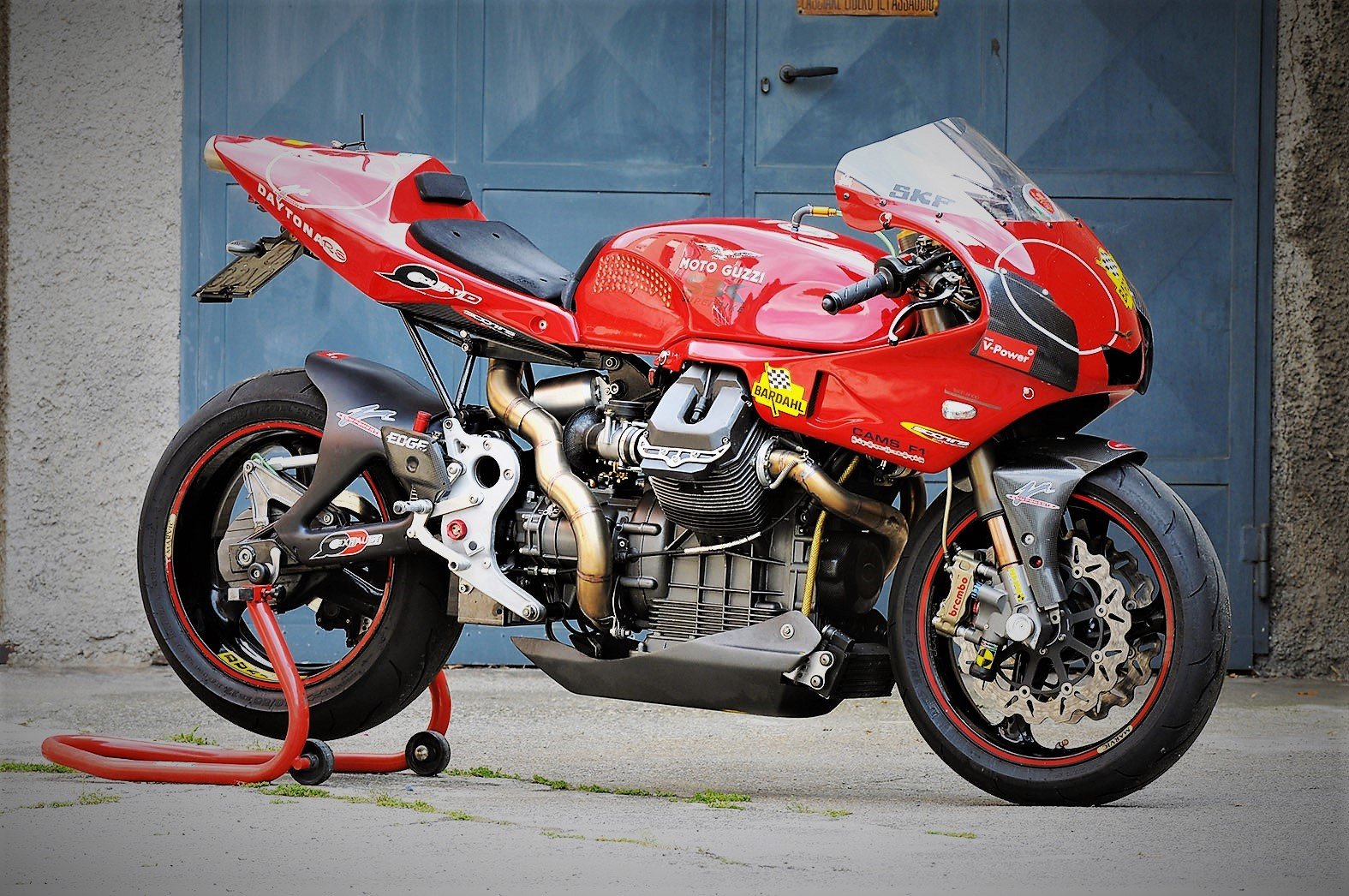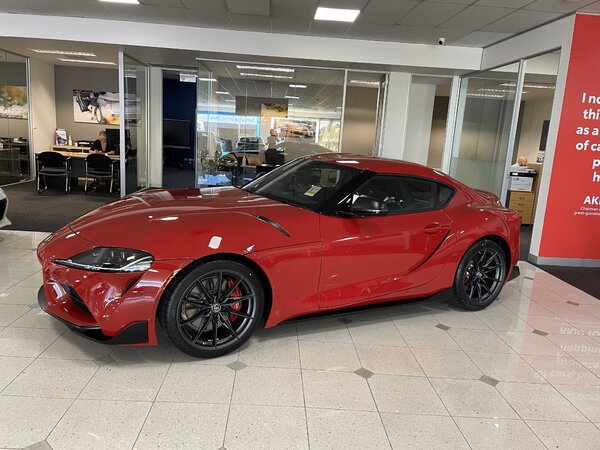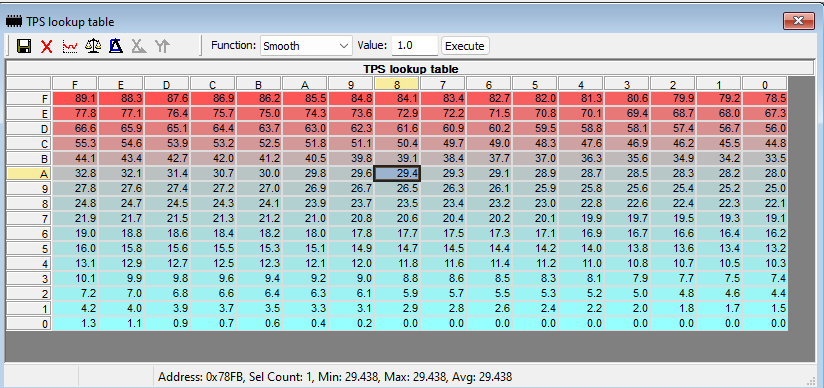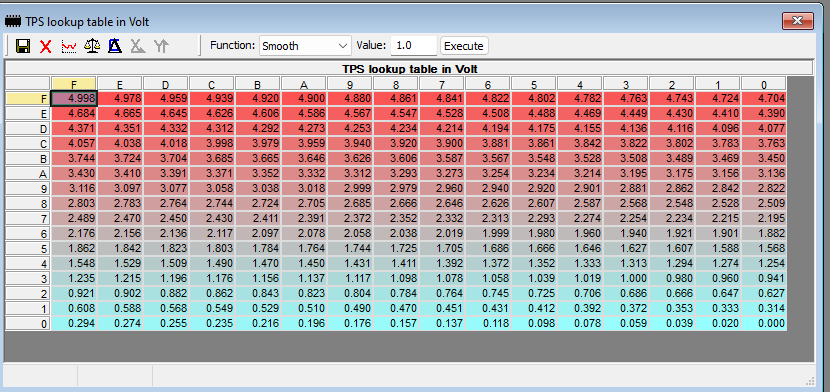-
Posts
5,449 -
Joined
-
Last visited
-
Days Won
276
Content Type
Profiles
Forums
Events
Gallery
Community Map
Everything posted by Lucky Phil
-
Here at last. Three litre inline 6 turbo and six speed manual. Basically a BMW Z4 with Toyota hardtop body. Two seats only and low.
-
You might want to look at the year model in the heading. Phil
-
Every time you turn on the ignition and power the ECU it activates the fuel pump for a prime period and also puts a shot of fuel down the intakes. Same as every time you start the bike no matter what the engine temp you get 4000 engine revolutions of the start enrichment map. Phil
-
Bad battery/battery connections. Voltage sag during start. Phil
-
By fuel pump switch I assume you mean the "kill switch"? I always pull the fuel pump fuse to eliminate the shot of fuel that goes down the intake ports every time you cycle the ignition switch. Phil
-
Green Scotchbrite gives the best satin finish to aluminium.
-
Yes it's a lovely place in it's own right. I did 2 TT's back in the mid 80's and my wife is quite keen to do one herself but after seeing a docco about the TT fortnight a few years ago I'm not super keen to return. These days you need to book 3 years in advance and it was fairly crowded back in the 80's but now it's wall to wall people during TT week/fortnight. A case of popularity ruining something that was really good. Seems popularity often has this impact on many endeavours the more I think of it. Climbing Everest is a complete joke these days as a classic example. Phil
-
Fit a new oil cooler. I bought one of these years ago as a spare. https://www.ebay.com.au/itm/175907905618?epid=18024036452&hash=item28f4eda052:g:CasAAOSwT6pVkuJ4&amdata=enc%3AAQAIAAAA4DGoZbS4KMUdszj0ffSVl%2Fhf%2FORfMYgJ158QIY%2FUntggB8nk8nWWkkcFeYpt%2Fp%2BYUW9n%2F%2FJkJ5rCj7O1Cp2VrwiwCBkQxw%2FQvo7VCikAwdWdGdWitVKc%2BR9OS6qujQ%2B9dq7HZyAt1eI6g4Zl3Yd3lDYvzcdXCDgxWk9wv%2BsbkRvzwoiI%2B5p2Oz6jaOUxfdyVm8TMIGIniiKscND5E9RvgHoK7c26a91tKA8xo47wkDKLXllQMoWoATI2FKWKL5yKIfokYtuHHiDegmOFZ5wa0TRDb2eh66JR3qsoHYc%2BwYIK|tkp%3ABk9SR57o--isYw
-
No because to achieve perfect primary balance in a 75 degree V twin you would need to offset the crank pins 30 degrees which KTM don't do in their RC8R engines for example. They still run a common crank pin but use a balance shaft to nullify the primary imbalance. The 90 degree V twin is perfect primary and secondary balance with a small rocking couple that needs no balance shaft because the RC is minor. Only commonly found engines that have perfect primary, secondary and zero RC are the inline 6 and V12. Phil
-
Personally I'd like to go to the old WSB and current BSB qualifying format where the rider has one warmup lap and then a lap to put down his fastest time. Eliminates the towing bullshit, the yellow flag on the hot lap rubbish and the race grid reflects the true order of who has the outright speed. Currently you can and do have riders with 3rd and 4th row raw speed on the front two rows a lot of the time due to nothing more than getting a tow during qualifying. They then get in the way and hold up the genuinely faster rider at the race start for 5 or 6 laps and ruin his race. Phil
-
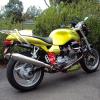
ANSWERED TPS break points at low throttle openings
Lucky Phil replied to audiomick's topic in Technical Topics
15M. This isn't some magical Meinolf figure John it's the factory setting for the V11 Sport. Your bike is 150MV +- 15mv so 157 is well withing the tolerance. Phil -

ANSWERED TPS break points at low throttle openings
Lucky Phil replied to audiomick's topic in Technical Topics
Here's another image docc, not sure if it helps. TPS in break/sampling points in degrees. On the vertical column there are break points or ecu sampling point's I guess every 2.9-3 degrees up to 29.4 degrees of throttle angle and from there to 84.1 it's now every 10-12 degrees or so. So the ecu sampling points are stacked tighter up to that 29.4 degrees so the resolution is greater I guess. Other than that I got nothing. I'll think about it some more and try and figure it out. It may take some time, lol. Whatever it is you can still get a nice running engine without knowing the high resolution detail with some fiddling and basic tuning knowledge. Phil -

ANSWERED TPS break points at low throttle openings
Lucky Phil replied to audiomick's topic in Technical Topics
Here you go Docc. TPS lookup table in Volts. I'm thinking that what you should see with a correctly set TPS at 157MV at fully shut throttle is column 8. As a computer luddite thats what I figure. The throttle angle values are the vertical scale in hex and all the other vertical scales are for an incorrect base setting and the ecu interpolates between what it should be and what it sees. Not sure in reality. Above my "G" I'm afraid. Phil -

ANSWERED TPS break points at low throttle openings
Lucky Phil replied to audiomick's topic in Technical Topics
It's been done, I've read it somewhere years ago. Phil -

ANSWERED TPS break points at low throttle openings
Lucky Phil replied to audiomick's topic in Technical Topics
I posted for the first linier v non linier graph docc. More general weber info. The V11 sport uses either the PF03 non linier or PF03c (without adjustment slots) linier does it not. From memory. My bike uses the PF09 non linier, a larger version of the PF03. https://www.bikeboy.org/ducati2vthrottleb.html Phil -

ANSWERED TPS break points at low throttle openings
Lucky Phil replied to audiomick's topic in Technical Topics
https://www.bikeboy.org/ducatitps.html Phil -

ANSWERED TPS break points at low throttle openings
Lucky Phil replied to audiomick's topic in Technical Topics
2-11.9 is 9 break points. In that TPS range to 3200 rpm there is 72 cells. The map goes to 8500 rpm and 84.8 degrees of throttle angle. Sorry about the break point and degrees in previous posts, those are for my bike. Phil -

ANSWERED TPS break points at low throttle openings
Lucky Phil replied to audiomick's topic in Technical Topics
Depends on where you are in the TPS range from memory docc and what TPS you have the linier or non linier. Also there are 256 break points but they are not distributed evenly. From 1000 rpm to 3000rpm and 2.4 degrees to 12.7 the there are more break points then the rest of the range so you have finer throttle control at smaller throttle angles. Phil -

ANSWERED TPS break points at low throttle openings
Lucky Phil replied to audiomick's topic in Technical Topics
It's not about the accuracy predominantly Mick it's about the consistency and the fact that with the throttle blades gently cable tied shut you have one less thing to think about and check and also the blades don't try and follow the TPS as you adjust it. Phil -
question is is it an original flywheel or has it been replaced with a RAM unit at some time. Phil
-
Single plater. Phil
-
That sounds like a twin plate clutch to me. My single plater is quiet engaged and a slight high pitched rattle (more of a swishing sound) when disengaged. My old twin plater sounded like yours does. Check the flywheel access hole and see if it's been change to a twin plater by the PO. BTW if you snap the clutch lever in and out of engagement at idle once it'll reduce the rattle by about 75% each time. The RAM single plater is the best individual mod you can do to a Guzzi big twin. Phil
-
Missed out a whole process of fitting the plate up to the crankcase. I hope there's a gasket between the roper plate and the engine crankcase, doesn't seem to be from the side image. Phil

